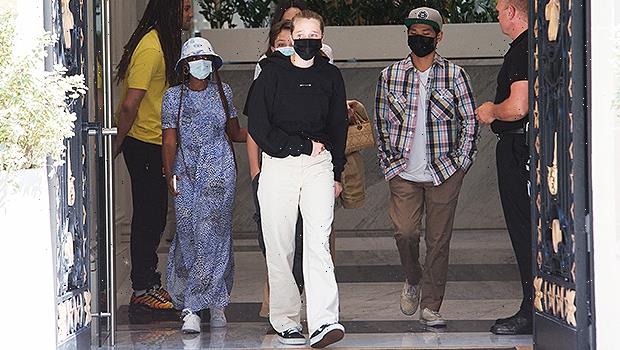NEW YORK — For St. Jude Children’s Research Hospital, even the sky is no longer the limit.
At a time when similar institutions face fundraising shortfalls as donors have shifted their priorities in response to the pandemic, the Memphis-based hospital has just completed its biggest fundraising year. The hospital is crediting its success to online donations and to publicity campaigns, like a sweepstakes to send someone to space that it hopes will raise $200 million.
The $2 billion that was raised in their 2021 fiscal year, St. Jude officials say, marks the first time a single-mission charity has reached that milestone. The officials plan to do it again — at least five more times, in fact — to fund its six-year, $11.5 billion strategic plan to accelerate research and treatment globally for children with catastrophic illnesses, especially cancer.
Rick Shadyac, the CEO of ALSAC, the fundraising and awareness organization for St. Jude, noted that even with an overall survival rate of 80%, cancer remains the leading cause of death by disease for American children. In many other countries, he said, the cancer survival rate for children is only about 20%.
“Solving pediatric cancer is a global problem — a multi-trillion, multi-year problem,” Shadyac said in an interview. “The way we look at it is: If not St. Jude, then who?”
St. Jude Children’s Research Hospital has always occupied a singular place in the health care world. Since opening in 1962, it has not charged its patients or their families for treatment. Because the bulk of its funding — about 87% — comes from individuals rather than major donors or corporations, it faced a fundraising threat during the pandemic.
But the hospital said its response to the crisis may have ended up strengthening its financial position.
“The pandemic completely changed our operating model,” Shadyac said. “We were an organization that either put on or were the beneficiaries of over 30,000 fundraising events, many of those being in-person. We quickly had to pivot to make those virtual or digital.”
That pivot appears to have separated St. Jude from most other health-related charities in 2020. Donations to health-related organizations fell 3% in 2020 compared with 2019, according to Giving USA, the annual report for philanthropy from The Giving Institute.
Una Osili, an associate dean at the Lilly Family School of Philanthropy at Indiana University who led the research and production of the report, said the drop in donations to health-related organizations was due mainly to the reduction of in-person fundraising events because of COVID-19 and other pandemic-related factors, like the “Grateful Patient Effect”: Because hospitals had to reduce their face-to-face interactions, the pool of patients who might have donated to the hospital after having personally seen it in action had shrunk.
“The organizations that did well in health were the ones that had the ability to pivot — those who moved to digital fundraising and online events quickly,” Osili said. “St. Jude, in particular, already had a lot of those online fundraisers in place and the different types of online engagement they do specifically around cancer and children.”
After the pandemic erupted in March of last year, Shadyac said, St. Jude substantially increased its investment in digital fundraising and new technologies. The hospital did outreach not only on major social media platforms like Facebook and Twitter but also on the exercise platform Strava and the gamer haven Twitch.
“We wanted to reach our audiences where they were,” he said.
Consider “Smirky,” the online persona of Michael Mairs of Denton, Texas, who has built a community of nearly 16,000 followers on Twitch, where people watch him play the video game Toontown. A 22-year-old senior in communications studies at the University of North Texas, Mairs has raised nearly $50,000 for St. Jude since 2018, when he first recognized that his hobby could be harnessed to raise money for charity.
“They’re just always going above and beyond to make sure that the patients are OK,” said Mairs, who learned about St. Jude after his 10-year-old cousin, Faith, received treatment there for Stage 2 Ewing sarcoma, a rare cancer in which a tumor grows in bones or the cartilage surrounding them.
According to St. Jude, Mairs raised more than $20,000 last year and an additional $15,000 in the first half of 2021 by playing videogames and requesting donations. Among other things, he takes $10 donations to play Bean Boozled, a favorite of his younger viewers, in which he eats a mystery jellybean that could taste like either chocolate or dog food.
Sarah Thomas Pilcher, a public health advocate from Little Rock, Arkansas, started raising money for St. Jude by leading yoga classes online because she said she believed in the hospital’s mission.
“St. Jude helps these families and these kids through something that is very traumatic,” Pilcher said. “I have a father who is a cancer survivor, and I have friends whose kids are cancer survivors and it was a big help for them.”
The hospital provides the kind of help Pilcher wished she had had when she was diagnosed with multiple sclerosis 11 years ago. She said she had to figure everything out herself, including buying her own walker.
St. Jude plans to continue increasing its investment in technology to try to capitalize on the energy and support of such volunteers and its donor base of 11 million.
“When 11 million people come together and get behind a mission,” Shadyac said, “incredible things can happen.”
———
The Associated Press receives support from the Lilly Endowment for coverage of philanthropy and nonprofits. The AP is solely responsible for all content. For all of AP’s philanthropy coverage, visit https://apnews.com/hub/philanthropy.
Source: Read Full Article


